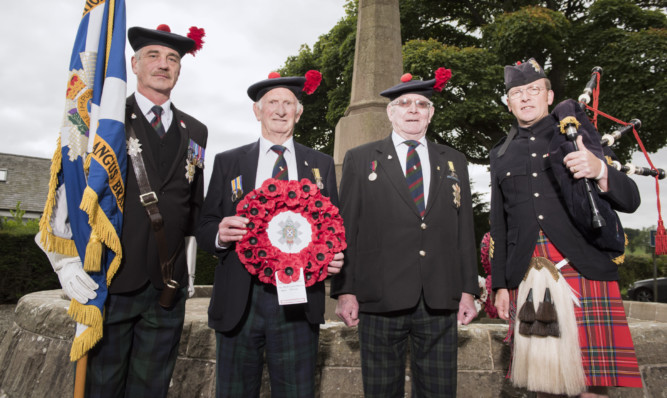Angus has marked the upcoming 100th anniversary of one of the most intense and bloody battles of the First World War.
The Battle of Loos on September 25 1915 was the largest land battle in British military history and resulted in terrible carnage.
A service was held at Glamis Parish Church before The Black Watch Angus branch standard was rededicated at the village war memorial.
Angus provost Helen Oswald and Georgiana Osborne, Lord Lieutenant of Angus, were among those in attendance.
Among the Glamis remembered was Captain Fergus Bowes-Lyon, born at the 600-year-old castle on the north side of the village and the older brother of the late Queen Elizabeth, the Queen Mother.
Captain Bowes-Lyon left behind a new wife to serve with the 8th Battalion, The Black Watch.
He would meet his end in the early part of the Battle of Loos, which brought the regiment’s darkest day at the appalling cost of more than 1,100 men who wore the Red Hackle.
The Black Watch were involved in an attack on a warren of trenches known as the Hohenzollern Redoubt, but initial success was stalled by fierce German resistance.
Courageously leading an attack on German lines on the third day of the battle, the 25-year-old captain’s leg was blown off by a barrage of artillery and, falling back into his sergeant’s arms, Bowes-Lyon was hit by enemy bullets and died on the field.
The Angus officer is buried in the quarry at Vermelles, northern France, the location of the Commonwealth War Graves Commission cemetery.
Branch association chairman Major Ronnie Proctor said the impact of the battle on Tayside was immense.
“Every Scottish infantry regiment took part in the battle,” he said. “For example, the 4th Battalion from Dundee suffered very heavy losses.
“Out of 20 officers only one survived. Of 420 men, 230 were killed or wounded.”
